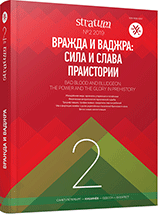Антропологическая характеристика и боевой травматизм населения Восточной Прибалтики III тысячелетия до н. э. (по материалам могильника Арду, Эстония)
The Anthropological Characteristics and Combat Traumas in Eastern Baltics in the III Millennium BC, as Evidenced in Ardu Cemetery in Estonia
Author(s): Sergey V. Vasilyev, Aivar Kriiska, Svetlana B. Borutskaya, Liivi VarulSubject(s): History, Archaeology, Military history, Studies in violence and power
Published by: Издательский дом Stratum, Университет «Высшая антропологическая школа»
Keywords: Eastern Baltic region; Late Neolithic; Corded Ware culture; Ardu; palaeopathology; combat traumas; craniology; osteology;
Summary/Abstract: The paper presents the results of the study of a paleoanthropological sample from the Late Neolithic Corded Ware Culture burial ground in Ardu, Estonia. A number of cranial features from Ardu I and Ardu II graves, associated with elongated skull, high and wide face, long and wide nose, and a good horizontal profile, which may indicate the European ancestry, have been identified. Morphological analysis of the postcranial skeleton revealed a relative elongation of the tibia in both individuals, as well as a well manifested saber-like flattening of the tibiae. The reconstructed intravital stature of men turned out to be 164.1 and 180.2 cm. On the cranium from Ardu II, marks of some blunt force trauma with evidence of healing process were found, and possible battle wounds were identified on the postcranial skeleton. Grave goods buried with that man included a battle stone axe and a flint knife. A description of other injuries and pathologies is also offered.
Journal: Stratum plus. Археология и культурная антропология
- Issue Year: 2019
- Issue No: 2
- Page Range: 237-250
- Page Count: 14
- Language: Russian
- Content File-PDF

